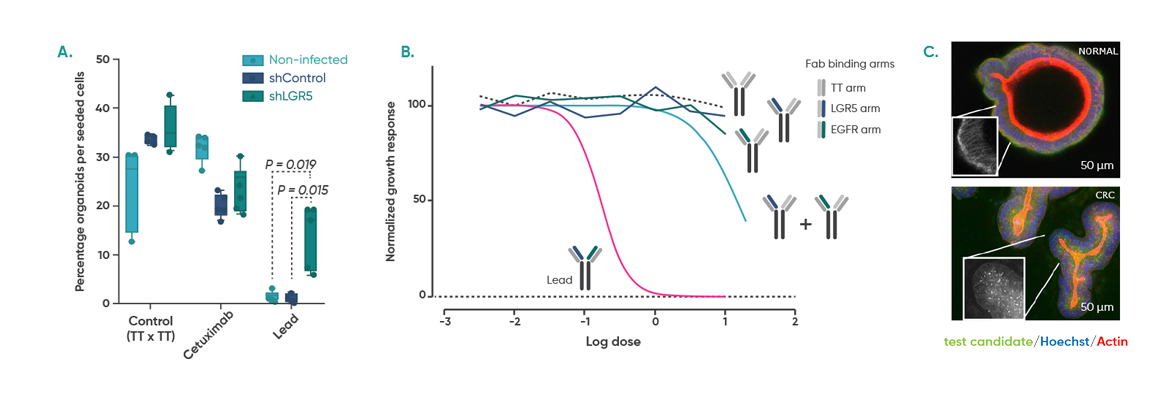
The client sought to develop a novel therapeutic strategy to block the proliferation of cancer stem cells (CSC) which are known to drive tumour growth in metastatic colorectal cancer (mCRC) patients. The current treatment paradigm involving EGFR inhibitors to stop CSC proliferation is only effective on a portion of patients who do not present activating mutations in KRAS and continue to be susceptible to acquiring resistance. WNT signalling is a well understood driver of stem cell proliferation in the gut and a promising therapeutic target.

The client who had developed a library of bispecific antibodies targeting cancer stem cell markers and growth factor receptors, was interested in evaluating preclinical efficacy and get insights for their biomarker strategy. Their experience with cancer cell lines and patient-derived xenografts (PDX) highlighted the challenge of finding a preclinical model that balanced physiological relevance with throughput. For this functional screening they were interested in using a library of models representative of the patient population.
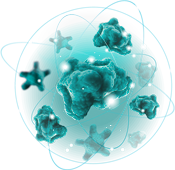
We developed a diverse CRC patient-derived organoid biobank, representing the wide spectrum of genetic alterations reported for CRC patients by The Cancer Genome Atlas (TCGA), which offered our client the ideal platform for their functional screening. This approach led to the selection of a lead candidate from a library of 500 bispecific antibodies. We further optimized the therapeutic window by testing the lead candidate in matched tumor-normal organoids from the same patients, ultimately identifying a clinical candidate with potent, selective growth-inhibitory activity—accelerating preclinical development within a 5-year timeframe.
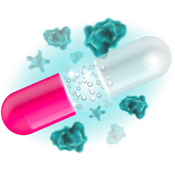
In this study, HUB Organoids were used to screen over 500 bispecific antibodies targeting cancer stem cell markers (LGR4, LGR5, ZNRF3, RNF43) and growth factor receptors (EGFR or HER3). Initial screening in 3 CRC models identified 28 candidates that inhibited tumor growth. These were further evaluated in a CRC biobank of 25 models, representing diverse genetic alterations and subtypes. From this, the most potent and broadly reactive bispecific antibody, with activity on KRAS mutant organoids, was selected for optimization and development.
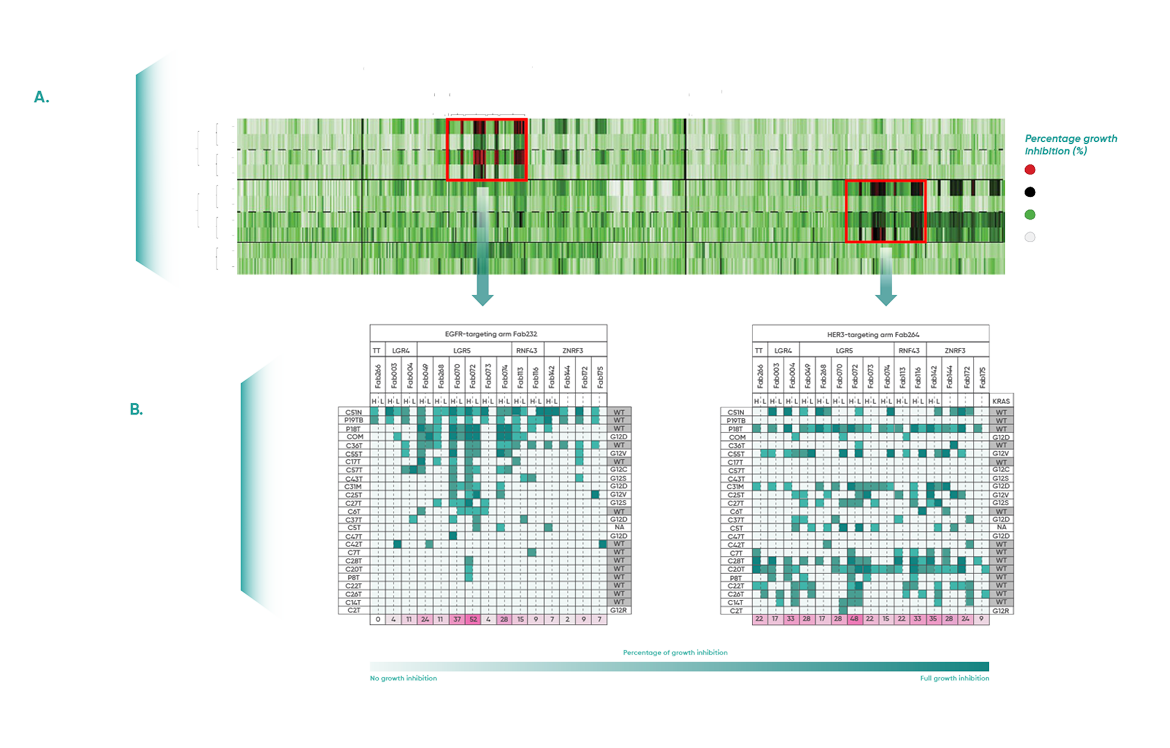
We helped our clients compare the efficacy of a lead candidate in inhibiting CRC organoid growth against the standard of care, cetuximab. Our CRC biobank, which includes metastatic, non-metastatic, and KRAS-mutant models, enabled us to identify that the experimental candidate outperformed cetuximab, showing efficacy in KRAS-mutant models where cetuximab had failed.

We developed matched tumor/normal organoids, allowing our clients to assess off-target toxicities within the same patient. When tested on a set of matched normal and CRC organoids, the experimental candidate outperformed the standard of care, showing superior efficacy on tumor organoids while demonstrating reduced toxicity on normal organoids.
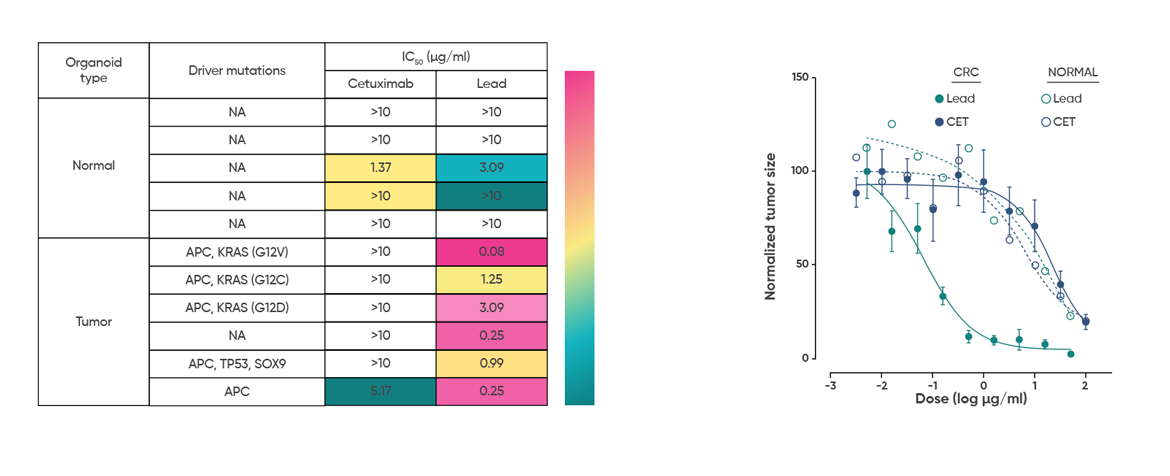
We also utilized the ability of our organoids to undergo CRISPR-mediated genetic manipulations. For instance, knockdown of LGR5 (shRNA) in PDOs resulted in insensitivity to the bispecific antibody. Mechanistic studies further revealed that targeting LGR5 or EGFR independently had little to no response, and targeting both pathways with separate antibodies only resulted in moderate tumor growth inhibition. In contrast, the experimental candidate demonstrated more potent effects. By employing high-content imaging, we were able to visualize the antibody’s mechanism of action, showing EGFR receptor delocalization from the cancer cell surface but not in normal organoids. This receptor internalization correlated with tumor shrinkage, providing valuable insights into the therapeutic potential of the candidate.
